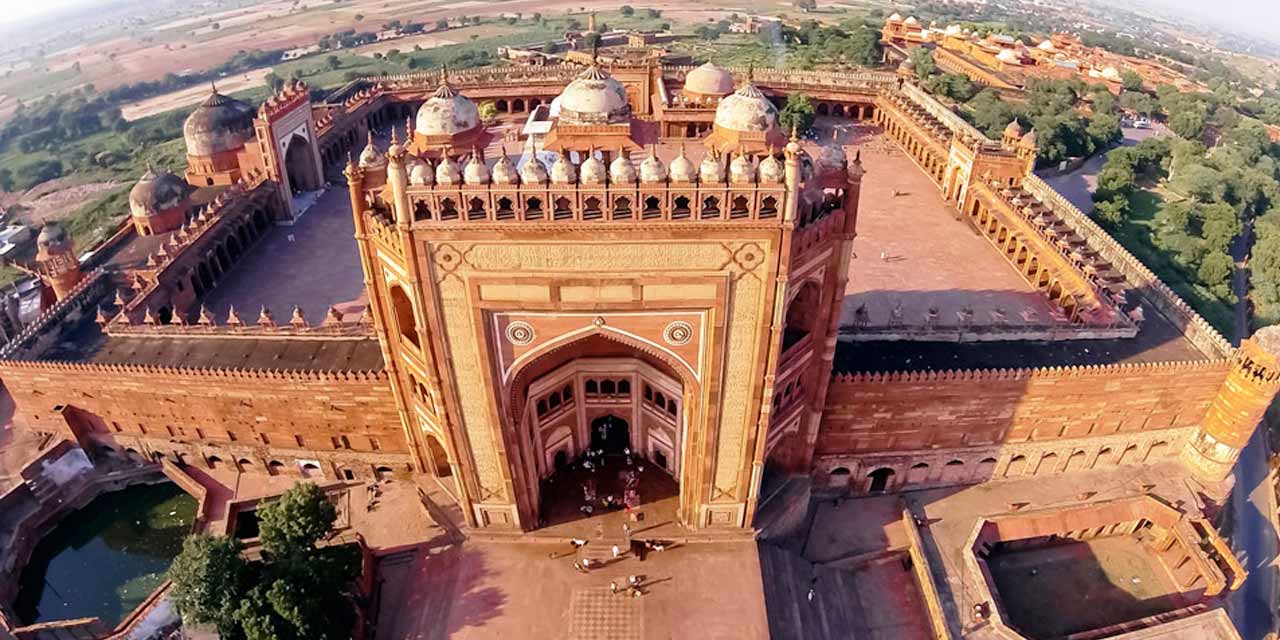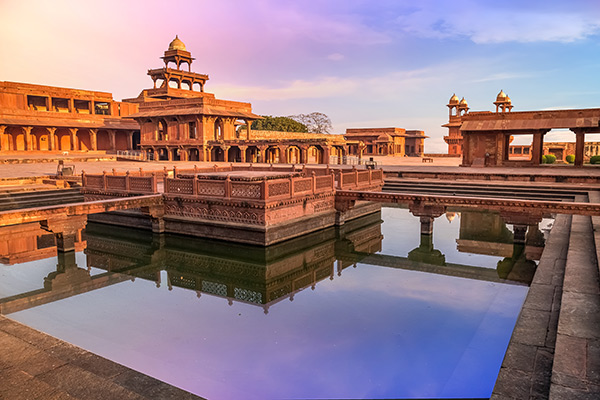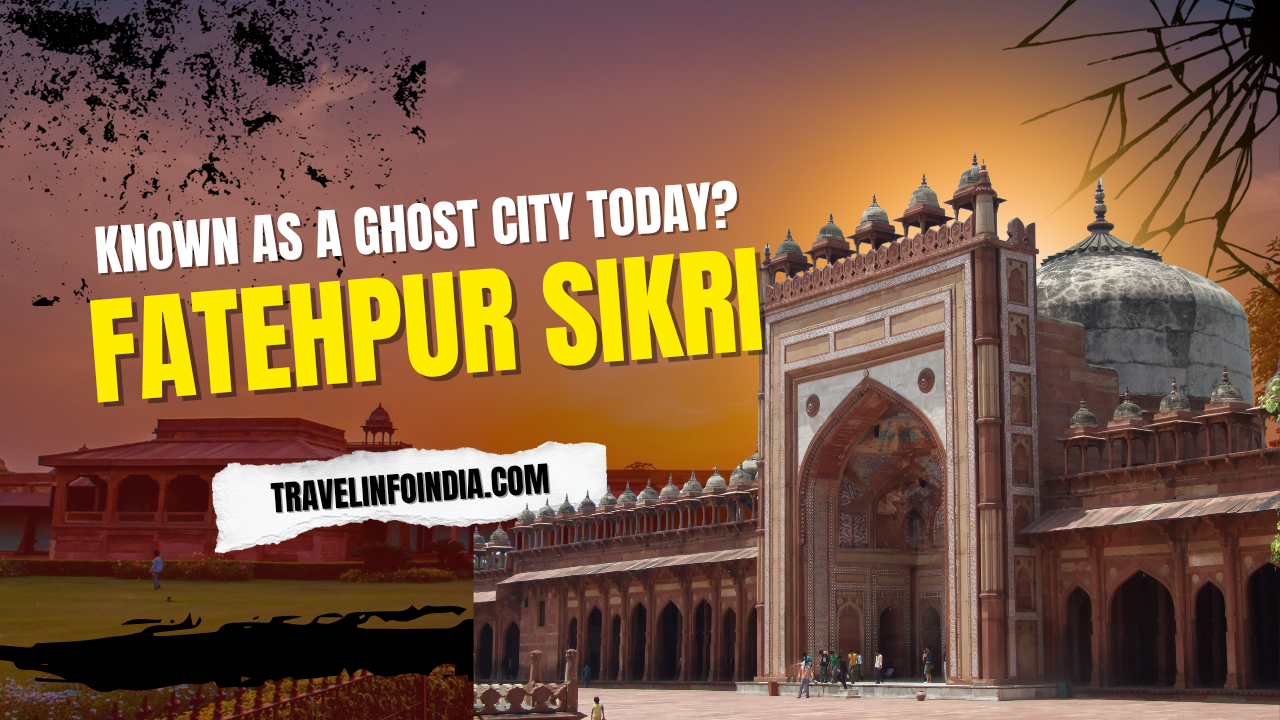Why Is Fatehpur Sikri Known as a Ghost City Today?
Imagine walking through grand royal palaces, majestic gateways, courtyards, and mosques that echo with silence — no courtly bustle, no royal parade, just the lingering glory of a once-magnificent empire. This is Fatehpur Sikri, once the proud Mughal capital under Emperor Akbar, now often called the “Ghost City.” Located about 40 km west of Agra in Uttar Pradesh, Fatehpur Sikri stands frozen in time, its red sandstone monuments largely intact, yet its court and many of its inhabitants long gone.
Why Is Fatehpur Sikri Known as a Ghost City Today? How did this transformation happen? What factors led to its abrupt abandonment, and why is it still called “ghostly”? Below are the key reasons — environmental, strategic, and cultural — that made Farehpur Sikri what it is today.

Why Is Fatehpur Sikri Known as a Ghost City Today?
Location of Fatehpur Sikri
Fatehpur Sikri is located in Uttar Pradesh, India, about 40 kilometers west of Agra. It lies on the road connecting Agra to Jaipur and is easily accessible by car, bus, or train. The nearest major airport is Agra Airport, and the city is well-connected by highways and railways, making it a convenient day trip from Agra or even Delhi.
Let’s Visit and Know About It
Stepping into Fatehpur Sikri is like walking through a living museum. The silence of its courtyards and the grandeur of its sandstone palaces whisper stories of Mughal glory. A visit here is not just about seeing monuments — it’s about feeling history.
Buland Darwaza – The towering gateway (54 meters high) welcomes you with inscriptions and artistry that speak of Akbar’s victories.
Jama Masjid & Tomb of Sheikh Salim Chishti – A spiritual hub where locals and travelers still tie threads, seeking blessings.
Panch Mahal – A five-storey airy palace that shows Akbar’s architectural genius.
Diwan-i-Khas – Famous for its central lotus-shaped pillar, where Akbar discussed matters of philosophy and religion.
Diwan-i-Aam – The hall where the emperor heard the voices of his people.
Walking through these places, you’ll realize why it feels like a ghost city—the structures stand majestic, but the life of the empire is missing.

History of Fatehpur Sikri
Fatehpur Sikri was built in 1571 by Mughal Emperor Akbar to honor the Sufi saint Sheikh Salim Chishti, who blessed him with an heir. Designed in red sandstone, the city included grand palaces, mosques, and gateways like the Buland Darwaza, Panch Mahal, and Jama Masjid.
For about 14 years (1571–1585), it served as the Mughal capital and a center of politics, culture, and religious dialogue. However, due to water scarcity and strategic needs, Akbar abandoned it and moved back to Agra and Lahore.
Declared a UNESCO World Heritage Site in 1986, Fatehpur Sikri stands today as a stunning but silent “Ghost City”, reflecting the glory and impermanence of empire.
Top Attractions in Fatehpur Sikri
1. Buland Darwaza
The “Gate of Magnificence,” standing at 54 meters, commemorates Akbar’s victory in Gujarat. It’s one of the tallest gateways in the world.
2. Jama Masjid
A grand mosque built by Akbar, featuring a vast courtyard and intricate architecture.
3. Tomb of Sheikh Salim Chishti
A white marble mausoleum honoring the Sufi saint who predicted Akbar’s heir.
4. Panch Mahal
A five-story palace offering panoramic views, showcasing Mughal architectural brilliance.
5. Diwan-i-Khas
The Hall of Private Audiences, known for its central lotus-shaped pillar.
6. Jodha Bai’s Palace
A blend of Hindu and Mughal architecture, believed to be the residence of Akbar’s wife.
7. Ibadat Khana
The House of Worship where Akbar held religious discussions.
8. Hiran Minar
A tower built in memory of Akbar’s pet antelope.
Entry Fees (as of 2025)
Indian Citizens & SAARC/BIMSTEC Nationals: ₹50
Foreign Nationals: ₹610
Children Below 15 Years: Free
Guided Tours: ₹630 (approx.)
Visiting Hours
Open: Daily, from sunrise to sunset
Best Time to Visit: October to March (pleasant weather)
Why Is Fatehpur Sikri Known as a Ghost City Today?
useful links (names only):
1. Archaeological Survey of India – Agra Circle
2. http://Tripadvisor – Fatehpur Sikri Attractions
3. http://TravelTriangle – Best Places to Visit
4. http://Holidify – Fatehpur Sikri Sightseeing
5. GetYourGuide – Fatehpur Sikri Entry Tickets
Fatehpur Sikri stands as a remarkable testament to the vision and ambition of Emperor Akbar. Though abandoned due to water scarcity and strategic reasons, its majestic palaces, mosques, and courtyards continue to awe visitors with their architectural brilliance and historical significance. Often called a “Ghost City,” Fatehpur Sikri offers a rare glimpse into the grandeur of the Mughal era, making it a must-visit destination for history enthusiasts, travelers, and photographers alike.
World Largest River Island Heart of Assam: Majuli





